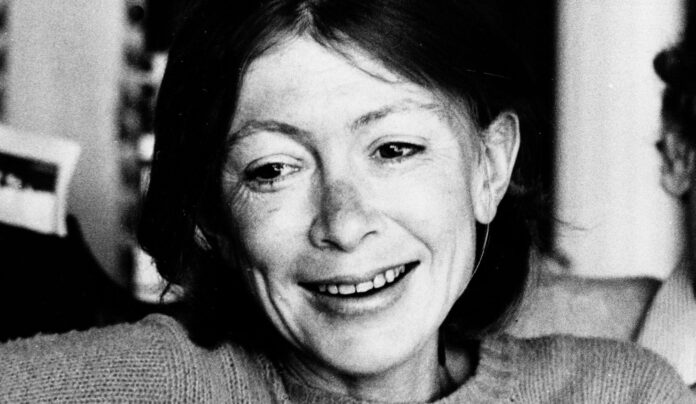Joan was an American writer who rose to prominence in the 1960s after winning a Vogue magazine essay contest.
Eventually, from the 1960s through the late 1970s, her writing immersed viewers in the realities of the 1960s counterculture and the Hollywood lifestyle.
Joan’s political writings frequently focused on political and social rhetoric; she produced the first mainstream media story claiming the Central Park Five were unfairly convicted in 1991.
For The Year of Magical Thinking, Didion won the National Book Award for Nonfiction in 2005 and was a finalist for the National Book Critics Circle Award and the Pulitzer Prize for Biography/Autobiography.
She later converted the book into a Broadway play, which debuted in 2007. In 2017, her nephew Griffin Dunne directed the Netflix documentary The Center Will Not Hold, which featured Didion.
Her books and essays deal with the breakdown of American morality and cultural upheaval and the overarching theme of individual and societal fragmentation. Fear or dread permeates the majority of her work, and you can find Didion’s novels and writings on the Internet.
Shopping malls, John Wayne, Hawaii vacations, and Stir in Haight-Ashbury were among the subjects she tackled in an edgy, reserved, and elegant manner.
She described herself as a “shy, bookish child” who used acting and public speaking to overcome social anxieties and was a voracious reader.
She spent her adolescence typing down Ernest Hemingway’s writings to better understand sentence structures.
Table of Contents
Joan Didion’s Profile
Before moving further, let’s have a look at Joan Didion’s profile.
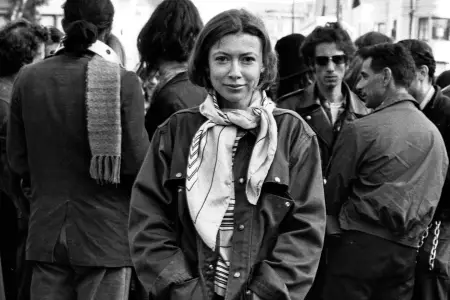
| Full name | Joan Didion |
| Gender | Female |
| Date of birth | December 5, 1934 |
| Place of birth | Sacramento, California, United States |
| Date of death | December 23, 2021 |
| Place of death | Manhattan, New York City, U.S. |
| Death age | 87-year-old |
| Zodiac sign | Sagittarius |
| Height | 4 feet 10inches (1.52m) |
| Weight | 45kg (approximately) |
| Father name | Frank Reese Didion |
| Mother name | Eduene Didion |
| Nationality | American |
| Profession | Novelist, memoirist, essayist |
| Sexual orientation | Straight |
| Marital status | Married |
| Husband | John Gregory Dunne (m. 1964–2003) |
| Children | Quintana Roo Dunne |
| Residence | Manhattan, New York City, U.S. (before she died) |
| Education | The University of California, Berkeley |
| Social media presence | |
| Net worth | $4 million |
Joan Didion Education
Didion earned a bachelor’s degree in English from the University of California, Berkeley, in 1956.
Even during her senior year, she won first place in Vogue’s “Prix de Paris” essay contest, and after writing a piece about San Francisco architect William Wurster, she was employed as a research assistant at the magazine.
Joan Didion Net Worth
Joan Didion’s net worth was estimated to be around $4 million; her main source of income was as a novelist in the United States. Didion works as a journalist, screenwriter, essayist, memoirist, and author of novels.
As a result, we can deduce that Didion amassed a sizable fortune for leading a successful and happy life.
Joan Didion Family
Didion was born in Sacramento, California, on December 5, 1934, to Frank Reese and Eduene Didion. Didion stated she began writing when she was five years old, but she didn’t consider herself a writer until her work was published.
As a child, Didion did not receive a traditional education. Her father was an Army Air Corps finance officer, and the family was always traveling.
She attended kindergarten and first grade, but she didn’t go to school regularly.
Her family returned to Sacramento in 1943 or early 1944, and her father went to Detroit to negotiate World War II defense contracts. Didion wrote in her memoir “Where I Was From” in 2003 that moving so frequently made her feel like a perpetual stranger.
Joan Didion Husband
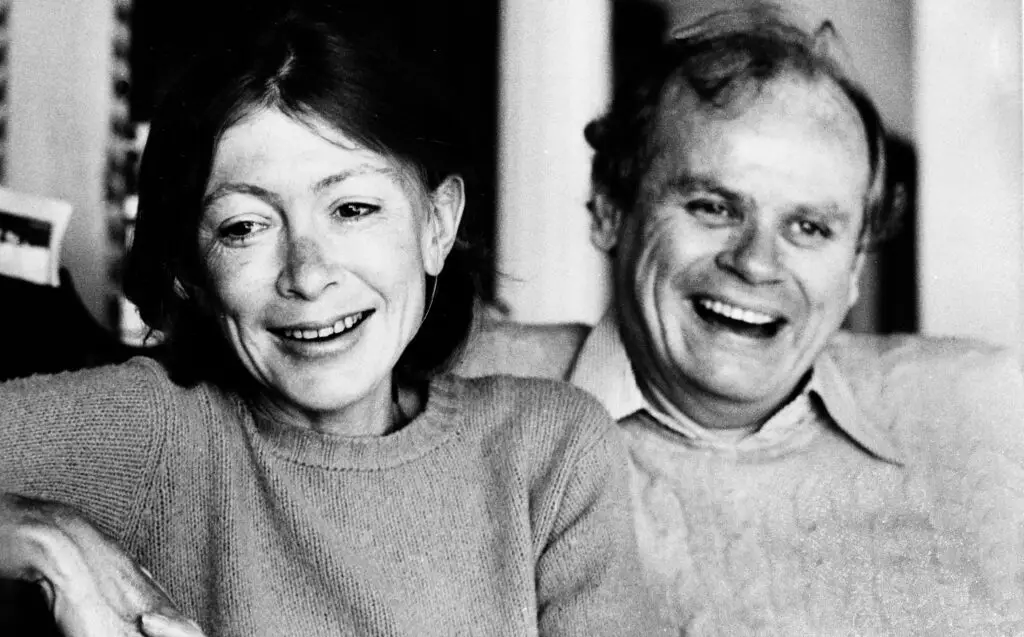
She was married to Time magazine writer John Gregory Dunne (m. 1964–2003), an American novelist, screenwriter, businessman, literary critic, and television mystery show host.
Didion met her husband while working at Vogue in New York. He was a younger brother of the author Dominick Dunne.
The couple married in 1964 and relocated to Los Angeles to merely stay for a few months, but California became their home for the next 20 years.
Joan Didion Daughter
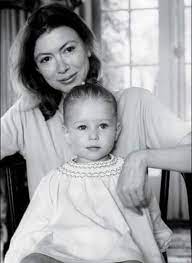
In March 1966, they adopted a newborn girl, Quintana Roo Dunne, and called her Quintana Roo Dunne.
Quintana Roo Dunne, Didion’s daughter, suffered pneumonia that advanced to septic shock in 2003 and was comatose in ICU when her father died of a heart attack on December 30.
Didion postponed his funeral for three months, waiting for Quintana to be well enough to attend. Quintana was in Los Angeles for her father’s burial when she tripped at the airport and injured her head on the pavement, necessitating brain surgery to remove a hematoma.
She died of severe pancreatitis on August 26, 2005, at 39, while Didion was promoting her book The Year of Magical Thinking in New York. In her 2011 book “Blue Nights,” Didion wrote on Quintana’s death.
Joan Didion Social Media Presence
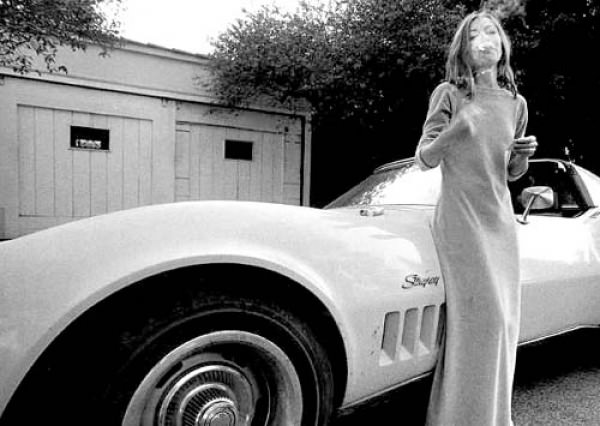
Her Instagram id was @didiondoc, with 273 posts and 18.5k followers.
She wrote in her bio, “We tell ourselves stories to live.” and the name of the Netflix documentary she was featured in; | Joan Didion: The Center Will Not Hold |.
Joan Didion Achievements
Didion was inducted into the American Academy of Arts and Letters in 1981.
She received the Edward MacDowell Medal in 1996.
In 2002, the Saint Louis University Library Associates presented her with the St. Louis Literary Award.
Didion’s book “The Year of Magical Thinking” garnered numerous awards, including the National Book Award for Nonfiction in 2005 and the Prix Medicis Essais in 2007.
The book was hailed as a “masterpiece of two genres: memoir and investigative journalism,” as it chronicled her anguish following her husband’s untimely death.
In 2006, she earned the American Academy of Achievement’s Golden Plate Award, presented by Awards Council member Justice Anthony M. Kennedy. In 2006, she was elected to the American Philosophical Society.
Didion was awarded the annual Medal for Distinguished Contribution to American Letters by the National Book Foundation in the year 2007.
Didion received the Evelyn F. Burkey Award from the Writers Guild of America in the year 2007
In 2009, Harvard University bestowed an honorary Doctor of Letters degree on Didion.
In 2011, Yale University awarded her another honorary Doctor of Letters degree.
On July 3, 2013 – The White House announced that she was one of President Barack Obama’s National Medal of Arts recipients.
Joan Didion Notable works
| Slouching Towards Bethlehem | 1968 |
| Play It as It Lays | 1970 |
| The Year of Magical Thinking | 2005 |
Top 5 Joan Didion books
| 1. | Slouching Towards Bethlehem |
| 2. | Play It As It Lays |
| 3. | The Year Of Magical Thinking |
| 4. | The Center Will Not Hold |
| 5. | Gay Talese’s Voyeur |
Joan Didion Fiction Novel
| Run, River | 1963 |
| Play It as It Lays | 1970 |
| A Book of Common Prayer | 1977 |
| Democracy | 1984 |
| The Last Thing He Wanted | 1996 |
Joan Didion Nonfiction Novel
| Slouching Towards Bethlehem | 1968 |
| The White Album | 1979 |
| Salvador | 1983 |
| Miami | 1987 |
| After Henry | 1992 |
| Political Fictions | 2001 |
| Where I Was From | 2003 |
| Fixed Ideas: America Since 9.11 | 2003 |
| Vintage Didion | 2004 |
| The Year of Magical Thinking | 2005 |
| We Tell Ourselves Stories to Live: Collected Nonfiction | 2006 |
| Blue Nights | 2011 |
| South and West: From a Notebook (2017) | 2017 |
| Let Me Tell You What I Mean | 2021 |
Joan Didion Screenplays
| The Panic in Needle Park | 1971 |
| Play It as It Lays | 1972 |
| A Star Is Born | 1976 |
| True Confessions | 1981 |
| Up Close & Personal | 1996 |
| As it Happens | 2012 |
Some Facts about Joan Didion
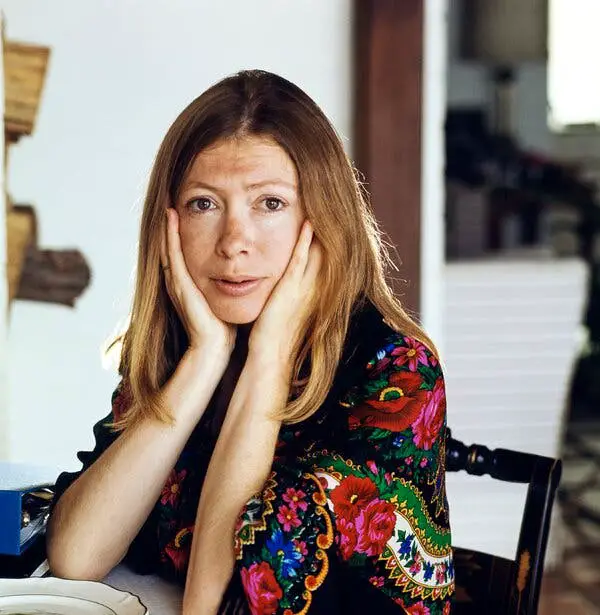
- John Gregory Dunne, her husband, and fellow writer was a huge supporter of her writing.
- The Netflix documentary The Center Will Not Hold featured Didion in 2017.”For more than forty-five years, her particular blend of sparse, exquisite prose and ferocious intelligence has earned her novels a place in the canon of American literature as well as the affection of generations of writers and journalists,” according to the citation.
- Didion discusses a psychological breakdown she had in the summer of 1968 in the title essay of The White Album.
- She was diagnosed as having had an incident of vertigo and nausea after undergoing psychological examination.
- She was diagnosed with multiple sclerosis.
- Didion describes how she suffered from recurrent headaches in her essay “In Bed.”
- Joan died on December 23, 2021, at the age of 87, from symptoms of Parkinson’s disease at her Manhattan residence.

